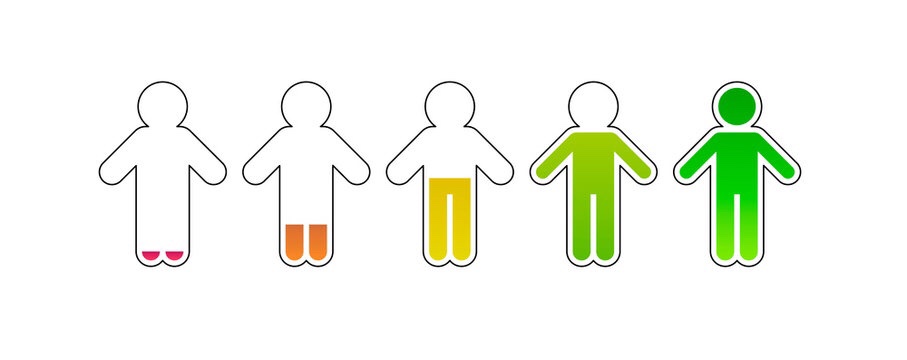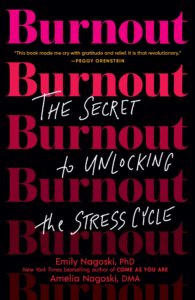Less than fully charged …

Reading is the one thing I do with any regularity. Whether it is my measured 25 minutes each morning, incessant listening as I piece together a puzzle, or the occasional all day binge on the weekend, there is a book in my hand at some point every day. Consequently, when I determined to revitalize and re-shape this space, I knew I wanted to create a review feature. Not posting here regularly last year as I read through a mountain of books has one benefit, I always have a pile of material to choose from.
I knew I wanted to write a book review this week. I even knew which book I wanted to review this week, because it remains as vital and useful at this moment as it was when I read it last year. As often happens, however, the universe conspired to bring together disparate elements, putting them in relation until the underlying message and theme becomes undeniable. Now, instead of a fairly straightforward book review, there’s television, and social commentary. The only question remaining is where to start pulling this thread.

Energy is a great place to start. Last week, for reasons I couldn’t really explain, I ended nearly every day feeling like the figure on the far left. I was exhausted. In fact, on Monday night, I was in bed by 8:30pm and asleep before 9:00pm. The depletion of energy I felt by the end of the day felt inexplicable, because I was generally eating well, sleeping well, and would wake up feeling in the green. If I wasn’t completely charged like the image on the far right, I was pretty close. And, while I had work to do each day, there was nothing overtly stressful happening. I completed my daily task lists, without anything looming incomplete over me. Even the weather cooperated by providing a lovely bit of sun and warm weather to re-charge the world after our grim week of snow and ice. My exhaustion at the end of each day felt bewildering.
My week-night pandemic ritual has become nearly as well defined as my morning contemplations (dinner on the couch with 30 minutes of local news followed by The News Hour). Yet, this week I couldn’t do it. I couldn’t take in the news any more. Yet, I didn’t have the energy to do anything but sit in front of the television. Fortunately, Dr. Revolution chimed in at just the right time to convince me to finally start Bridgerton.
I’m late enough to this game that I don’t feel like I need to recap the standard fare about this show. If you haven’t heard about the intimacy coordinators required to make this show, or seen Regé-Jean Page on Saturday Night Live, the details are covered incessantly elsewhere. While I will admit the eye candy is lovely and the underlying romance swoon-worthy, this technicolor ode to Austen and Regency scandal sheets makes its way onto the blog for other reasons this week. I will elucidate below. For now, what I will say is that if you need a retreat from the world there are worse places to go than 1813 London.
Bridgerton follows the coming out season for Daphne Bridgerton, the eldest daughter of a Viscount. In this season a pseudonymous author Mrs. Whistledown begins publishing a gossip sheet detailing the events of the season. Daphne’s father has passed away, leaving his eldest son Anthony in charge of the family estate and Daphne’s courtship. As in often the case in such stories, Anthony is chaffing under the strain of his new responsibilities. Don’t worry, there are no spoilers here and I will not begiving you the entire plot run down. You only need the set up to understand that as Anthony attempts to exert his new authority as Viscount by making a match for Daphne he fails to consult her, and routinely dismisses her desires. Daphne often asks him something to the effect of, “Is it because I am a woman that you do not think me capable of knowing my own mind or understanding my own experience?” The question of a woman’s ability to determine her own desires, her own life, and to shape the world around her runs throughout the show underscoring many different plotlines. As does the way the men of the show continually fail to see women as fully developed people, not just as their role in society or function as an accessory to a man’s life.
Perhaps it is because I’d immersed myself in Bridgerton, that I started paying attention to just how many women are still forced to ask the same questions. Let me provide just one category of example, women’s health. Just this week, yet another friend shared with me the story of how complicated her relationship with her body and her health are, because she has consistently had to convince medical doctors to take her concerns seriously, to believe her description of her experiences, to treat her symptoms not her weight. She described how it has taken her so long to feel an ownership over her body and her health, after doctors – instead of treating her – asked her if she was faking her symptoms. I don’t know a woman without a similar story. If it isn’t an overt questioning of symptoms, “Are you faking it?” Ask a woman how many times the intensity of her pain has been questioned? How many times has she been treated like addict for asking for relief from that pain. My point is that women still, in so many ways, have to constantly prove the validity of their own experience.
The book, books really, I recommend today start from this point and explore the causes and costs of how women must navigate the world. Emily and Amelia Nagoski’s book Burnout: the secret to unlocking the stress cycle focuses entirely on women by identifying the elements that make life stressful for contemporary women and then providing a way for women to better manage that those stressors. The functional tips the Nagoski’s provide for dealing with stress are useful to everyone. Their discussion of the societal pressures creating stress creates a place where women can see themselves and their experiences taken seriously. The book becomes an expansive breath that reminds us that we are not alone.
To help frame their discussion of the societal pressures that create different stressors for women, the Nagoski’s rely on Dr. Kate Manne’s book Down Girl: the Logic of Misogyny. They identify Dr. Manne’s concept of Human Giver Syndrome as a significant stressor in women’s lives. If I did not overtly recommend Dr. Manne’s book a couple of years ago when I first read it, let me do so now. Dr. Manne is a philospher. Consequently the opening chapter or two of the book, where she situates herself within the philosophical tradition are dense. However, the following chapters where she lays out Human Giver Syndrome and her discussion of misogyny are brilliant.
Within this pandemic, we are all being asked to give more than what we are able to currently receive. And, we are all being asked to do this differently depending on our race, gender, our socioeconomic status, and all the intersections of those elements in our lives. Burnout and Down Girl describe what it means to be a woman in this world. Yes, they were written pre-pandemic, but their lessons are still relevant. Down Girl helps us to name, see, and understand women’s experience in the world. Burnout provides us actionable practices to recuperate from our experiences in the world. Of all the books I read last year and could have chosen to review right now, I chose Burnout, because it is so helpful. If you don’t want to read the whole book, Brené Brown interviews Emily and Amelia Nagoski in the first season of her Unlocking Us podcast. It is a remarkable conversation that brought me to tears at least twice.
After this week, I understand why my energy is depleted so quickly, and in writing this review, I am reminded that I know what to do to replenish myself.











 D5 Creation
D5 Creation